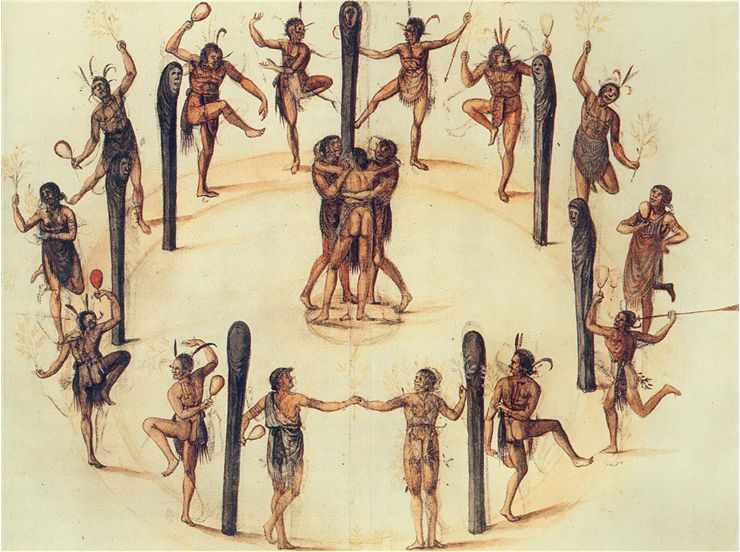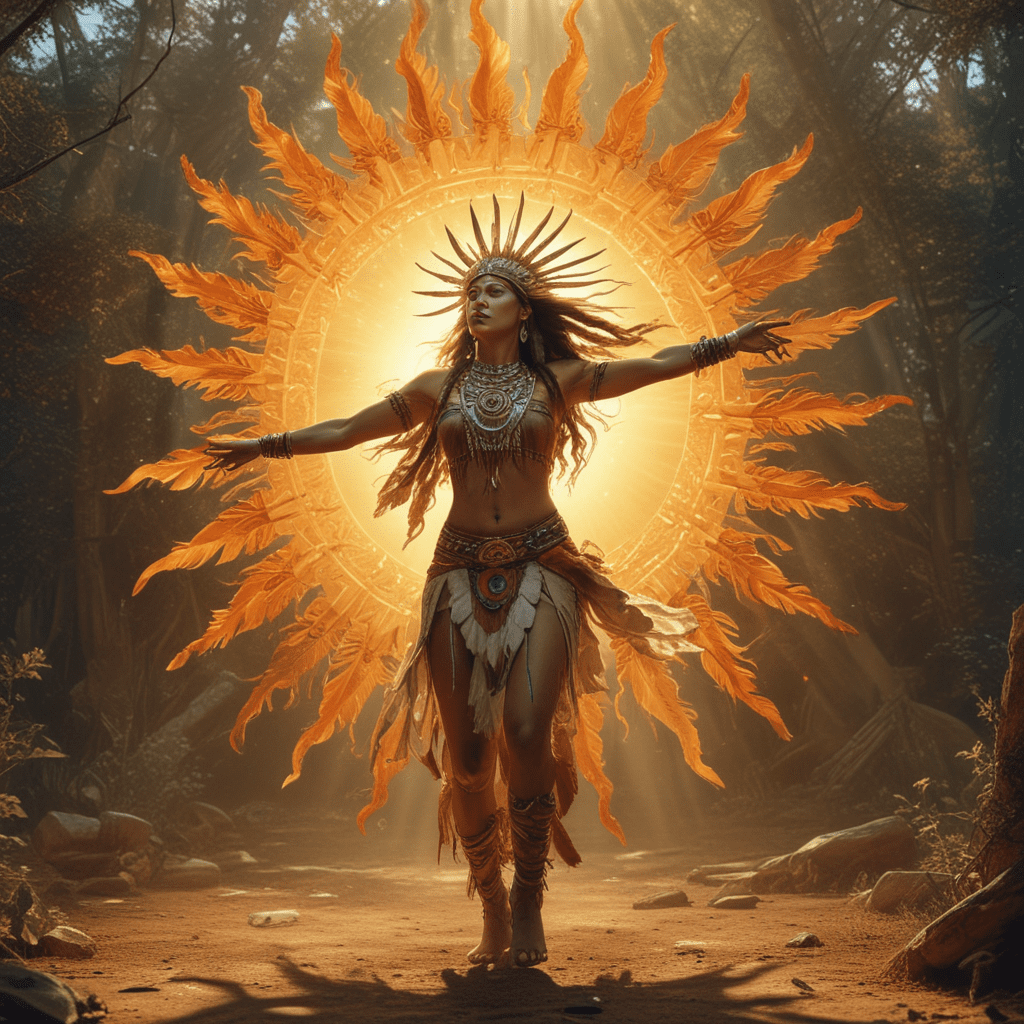
Beyond the Piercing: Unveiling the Profound Meaning of the Sun Dance
For the uninitiated, the Sun Dance of the North American Plains Indigenous peoples can appear enigmatic, even confronting. Images of dancers engaged in acts of self-sacrifice, often involving piercing, have, for centuries, fueled misunderstanding, sensationalism, and even condemnation. Yet, to peel back these superficial layers is to discover a ceremony of immense spiritual depth, a profound act of prayer, renewal, and unwavering resilience that lies at the very heart of many Indigenous cultures. Far from a mere spectacle or an act of self-mutilation, the Sun Dance is a living testament to an enduring connection to the sacred, a vibrant prayer for the well-being of all life, and a powerful symbol of cultural survival against overwhelming odds.
To truly grasp the meaning of the Sun Dance, one must first shed preconceived notions and approach it with an open heart and a spirit of respect. It is not a singular, monolithic ritual, but rather a diverse collection of ceremonies practiced by various Plains tribes, including the Lakota, Cheyenne, Arapaho, Shoshone, Blackfeet, and Crow, among others. While specific practices and mythologies vary, core tenets of spiritual renewal, communal well-being, and personal sacrifice remain constant across these traditions.
Roots in the Plains and a History of Suppression

The origins of the Sun Dance are deeply embedded in the ancient history and spiritual landscape of the Great Plains. It emerged from a way of life intrinsically linked to the buffalo, the land, and the cycles of nature. Traditionally held in late spring or early summer, when the buffalo were plentiful and the land was vibrant, the ceremony marked a critical period of spiritual and communal rejuvenation. It was a time to give thanks for the past year’s blessings, to pray for abundance in the coming year, and to renew the sacred covenant between the people and the Creator.
However, the Sun Dance’s history is also marked by a dark chapter of brutal suppression. As the United States government aggressively pursued its assimilationist policies in the late 19th and early 20th centuries, Indigenous spiritual practices were deemed "savage" and an impediment to "civilization." The Sun Dance, with its powerful visual elements and deep cultural significance, became a primary target. In 1883, the "Religious Crimes Code" effectively outlawed many Indigenous ceremonies, including the Sun Dance, with severe penalties for those who continued to practice. This period, often referred to as the "Era of Religious Persecution," forced these sacred rituals underground, pushing them to the brink of extinction.
Despite the threats of imprisonment, violence, and the confiscation of sacred objects, the Sun Dance persevered. Elders and spiritual leaders, often at great personal risk, continued to teach and practice the ceremonies in secret, passing down the knowledge to a new generation. This clandestine endurance speaks volumes about the profound importance of the Sun Dance to the spiritual and cultural identity of the people. It was a lifeline, a vital connection to their heritage that could not be severed by government decree.
The Sacred Lodge and the Tree of Life
The physical setting of the Sun Dance is itself imbued with deep symbolic meaning. The ceremony typically takes place within a circular, open-air lodge constructed from poles and brush, representing the hoop of life and the interconnectedness of the universe. At the very center stands the sacred cottonwood tree, often referred to as the "Tree of Life" or "Grandfather Tree." This tree, carefully selected and ceremonially raised, is the axis mundi, the spiritual center of the universe for the duration of the dance. It symbolizes the connection between the earth and the heavens, and its branches often hold offerings of tobacco or prayer cloths, carrying the prayers of the participants skyward.
Around this central pole, for several days and nights, dancers abstain from food and water, engaging in a relentless rhythm of movement, song, and prayer. The sound of the drum, often described as the heartbeat of the Earth, provides the pulsating rhythm that propels the dancers forward. Each step, each beat, each chant is a prayer, a physical manifestation of devotion and supplication. The dancers, often adorned in traditional regalia, move in specific patterns, their gaze frequently directed towards the sun – not as a deity itself, but as a powerful manifestation of the Creator’s life-giving energy.
The Sacred Act of Sacrifice: Beyond Misconception
Perhaps the most misunderstood aspect of the Sun Dance is the practice of piercing. For some tribes, particularly the Lakota, participants, predominantly men but sometimes women, may offer their flesh as a physical sacrifice. Small wooden pegs or skewers are inserted through the skin of the chest or back, attached to ropes that are then connected to the central pole. Dancers then lean back, pulling against the ropes until the skin tears free, releasing them from their offering. This act, often sensationalized and misinterpreted as "torture," is, in fact, an intensely personal and profoundly spiritual act of prayer and sacrifice.

It is crucial to understand that this is a voluntary act, undertaken after years of preparation and deep spiritual commitment. It is not a test of endurance for its own sake, nor is it about pain. Instead, the physical discomfort is transformed into a potent form of prayer. As one Lakota elder explained, "We offer our flesh, which is all we truly own, back to the Creator. It is a tangible offering, a way of saying thank you for life, for the buffalo, for our people." The blood shed is seen as a direct offering, nourishing the earth and carrying prayers directly to the spiritual realm. It is a deeply personal expression of humility, gratitude, and a willingness to give everything for the well-being of the community and all creation.
The piercing also symbolizes a profound connection to the natural world and the cycles of life and death. Just as the buffalo gave its flesh to sustain the people, dancers offer their own, participating in a sacred reciprocal relationship. It is an act of empathy and solidarity with all beings who sacrifice for the benefit of others.
The Multifaceted Meanings: A Tapestry of Purpose
The layers of meaning within the Sun Dance are rich and interwoven, encompassing individual and communal well-being, historical memory, and future hope.
-
Sacrifice and Renewal: At its core, the Sun Dance is a ceremony of profound sacrifice, both personal and communal. Participants sacrifice their comfort, their food, their water, and for some, their flesh, to demonstrate their devotion and commitment to the Creator. This personal offering is not for individual gain, but for the collective good – for the healing of the people, for the health of the land, for the prosperity of future generations. It is an act of "giving back" for the gifts of life received. This sacrifice is believed to purify the individual and renew the spiritual energy of the community, ensuring the continuation of life.
-
Interconnectedness: The Sun Dance reinforces the profound interconnectedness of all things: humans, animals, plants, the earth, the sky, and the spiritual realm. The circular lodge, the central pole, the collective prayers, and the shared suffering all underscore the idea that no individual exists in isolation. "We are all related" (Mitakuye Oyasin, in Lakota) is a guiding principle, and the Sun Dance is a living embodiment of this philosophy. Prayers offered are not just for the immediate community but for the entire world, for peace, healing, and harmony.
-
Healing and Vision: The rigorous physical and spiritual demands of the Sun Dance often lead participants to altered states of consciousness, where visions and profound insights can be experienced. These visions are not merely personal revelations but are often interpreted as guidance for the community, providing direction, solutions to problems, or confirmation of the spiritual path. The dance itself is a powerful form of healing – physical, emotional, and spiritual – for those who participate and for those who witness it. It provides an outlet for grief, a space for spiritual cleansing, and an opportunity for profound personal transformation.
-
Resilience and Cultural Preservation: The very existence of the Sun Dance today is a testament to the extraordinary resilience of Indigenous peoples. Having survived decades of governmental suppression, it stands as a powerful symbol of cultural survival and resistance. Its revival, particularly after the American Indian Religious Freedom Act of 1978, has been a cornerstone of cultural revitalization movements across Indian Country. By continuing to practice the Sun Dance, Indigenous communities reaffirm their identity, honor their ancestors, and ensure the transmission of vital knowledge and traditions to future generations. It is a living, breathing connection to a sacred past and a vibrant pathway to a sovereign future.
-
Community and Collective Identity: Beyond the individual spiritual journey, the Sun Dance is a deeply communal event. Family and friends gather to support the dancers, to sing, drum, cook, and pray. It is a powerful reaffirmation of tribal identity and solidarity. The shared experience of fasting, praying, and witnessing the sacrifices creates an unbreakable bond among participants and observers. It is a time for elders to teach, for youth to learn, and for the entire community to come together in collective purpose and prayer.
The Sun Dance Today: A Living Tradition
Today, the Sun Dance continues to be a vibrant and sacred ceremony, practiced across the Plains by numerous Indigenous nations. While it remains a deeply private and culturally specific ritual, its enduring power offers invaluable lessons for the wider world: lessons about sacrifice for the common good, about profound gratitude for life, about the interconnectedness of all things, and about the unwavering human spirit in the face of adversity.
It is a reminder that true understanding often requires looking beyond the surface, challenging preconceived notions, and approaching diverse cultures with humility and respect. The Sun Dance is not a relic of the past; it is a living, breathing prayer for the present and a profound beacon of hope for the future, demonstrating the enduring strength, spirituality, and wisdom of Indigenous peoples. Its meaning is not to be found in sensational headlines, but in the unwavering hearts of those who dance, those who pray, and those who continue to carry forward this most sacred of traditions.


